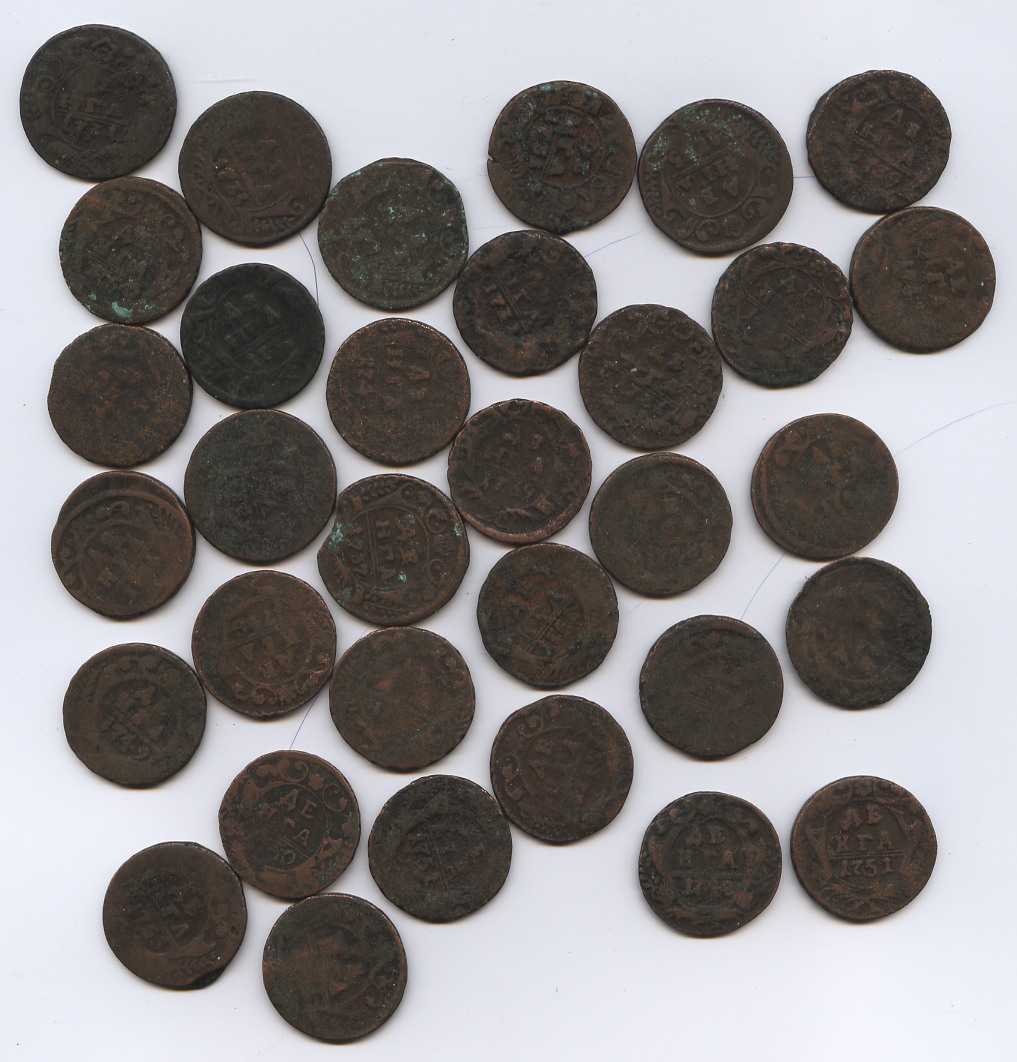Options
California gold coin. Does this have any value?
This came with a collection I bought, and I can't find any reference on it.
Diameter: only 10 mm
Is it a good coin that I should keep, or is it just one of these 1-dollar-a-piece kind of coins?
If it's good, it probably would need some acetone


Diameter: only 10 mm
Is it a good coin that I should keep, or is it just one of these 1-dollar-a-piece kind of coins?
If it's good, it probably would need some acetone


0
Comments
rainbowroosie April 1, 2003
Gold does not get green spots like that. Copper or brass do.
Check out my current listings: https://ebay.com/sch/khunt/m.html?_ipg=200&_sop=12&_rdc=1
Thanks, anyway, for the fast answers. It's always better to know
<< <i>Gold does not get green spots like that. Copper or brass do. >>
Indeed. Are there any other metals precious or not that do not tarnish or otherwise change? Stainless steel is close, but left out long enough even that seems to corrode.
<< <i>
<< <i>Gold does not get green spots like that. Copper or brass do. >>
Indeed. Are there any other metals precious or not that do not tarnish or otherwise change? Stainless steel is close, but left out long enough even that seems to corrode. >>
Platinum and palladium come to mind. Chrome and nickel are also highly corrosion resistant which is why they are used in the manufacture of stainless steel.
Worry is the interest you pay on a debt you may not owe.
<< <i>
<< <i>Gold does not get green spots like that. Copper or brass do. >>
Indeed. Are there any other metals precious or not that do not tarnish or otherwise change? Stainless steel is close, but left out long enough even that seems to corrode. >>
Depending on your environment, corrosion may or may not happen. It can be very binary like that.
Water + a volatile, mobile ion such as chlorine tend to facilitate corrosion. Heat does too. Anything can be made to react at the right energies.
Sometimes, as the metal corrodes, the metal forms a smooth nonreactive coating (oxide, etc) that stops the corrosion at the surface. Aluminum tends to be like this. Sometimes the corrosion is such that it flakes away and exposes new metal, continuing the corrosion until the metal is completely gone. Iron tends to be like this. It depends upon the mechanical behavior of the corrosion product. Corrosion is an interesting field and gets right down to the atomic level. Metal is made of little crystals; where these crystals meet are crystal lattice defects (grain boundaries); regions where things don't fit so perfectly. Just about all of the interesting stuff happens at the grain boundaries.
Platinum is one of the well known noble, precious metals that just resists everything. Similar to gold, which also tends to want to stay in metal form.
A list of relatively unreactive, Noble metals
I've seen 'em go for as much as ten bucks, sometimes.
Figure five bucks or so, as a curiosity. Not totally worthless, anyway.
<< <i>
<< <i>
<< <i>Gold does not get green spots like that. Copper or brass do. >>
Indeed. Are there any other metals precious or not that do not tarnish or otherwise change? Stainless steel is close, but left out long enough even that seems to corrode. >>
Depending on your environment, corrosion may or may not happen. It can be very binary like that.
Water + a volatile, mobile ion such as chlorine tend to facilitate corrosion. Heat does too. Anything can be made to react at the right energies.
Sometimes, as the metal corrodes, the metal forms a smooth nonreactive coating (oxide, etc) that stops the corrosion at the surface. Aluminum tends to be like this. Sometimes the corrosion is such that it flakes away and exposes new metal, continuing the corrosion until the metal is completely gone. Iron tends to be like this. It depends upon the mechanical behavior of the corrosion product. Corrosion is an interesting field and gets right down to the atomic level. Metal is made of little crystals; where these crystals meet are crystal lattice defects (grain boundaries); regions where things don't fit so perfectly. Just about all of the interesting stuff happens at the grain boundaries.
Platinum is one of the well known noble, precious metals that just resists everything. Similar to gold, which also tends to want to stay in metal form.
A list of relatively unreactive, Noble metals >>
Wow Great info. Thanks. And that wiki entry is a good read.
Yet, railcars would develop a 'wormhole' type leak. Why? It's not supposed to do that anywhere close to the temperatures typically encountered.
Well, in the winter, this phosphoric acid gets syrupy and needs to be heated in order to make it flow. This is done with steam; a long metal tube with steam coming out the end is supposed to be used to stir around the stuff in the tank.
Lazy operators would just stick the tube into the tank, with the nozzle right up against the bottom of the tank. They would let it sit there, because stirring takes effort.
This made a little pocket of super-heated steam and acid, persistently right up against a single location on the stainless steel tank wall. The combination of 3-400 degree steam, acid and stainless steel was a recipe for chewing a corrosive wormhole in that tank.
Nothing to do with green spots on brass coins. Sorry.